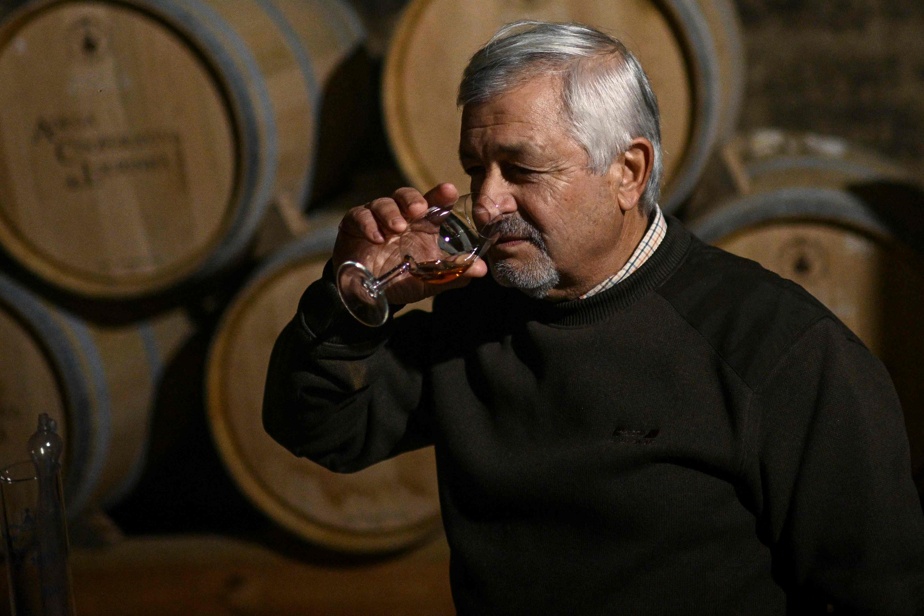(Lourinhã) Nicknamed Lourinhac, a grape-based brandy produced in Lourinha, about sixty kilometers north of Lisbon, using the same processes as cognac and armagnac, seeks to find a place in the highly competitive spirits market.
The mahogany-tinged drink ages in barrels made of chestnut or oak wood, sourced from northern Portugal and Limousin in central France.
The production of Lourinha brandy is inspired by French know-how spread by Napoleonic troops when they invaded the region at the beginning of the 19th century, explains the president of the Lourinha Cooperative Cellars, Jorge Humberto .
In the dark galleries of these cellars where there is a heady smell of alcohol, dozens of barrels with thousands of liters of this Portuguese “aguardente” are lined up and stacked on top of each other.
This year alone, some 18,000 liters of this brandy went into bottles, labeled manually, one by one.
“We do not add any product to our brandy,” emphasizes the vice-president of the cooperative, Jorge Candido, specifying that “it is the wood of the barrels where it ages” which “gives it the vanilla and fruity” so appreciated by fans.
Located on the Portuguese coast, the Lourinha vines, composed mainly of white grape varieties, benefit from a mild climate, with average annual temperatures of 16 degrees Celsius.
“We are in a microregion” which brings together “the ideal conditions for producing eau-de-vie,” says Carlos de Melo Ribeiro, one of the main producers in Lourinhac.
The wines produced here are very different from those traditionally found in Portugal. “They are fresh, more acidic than elsewhere and with a low alcohol content,” continues the owner of Quinta do Rol, which currently has the only distillery in the region.
Lourinha, which has long supplied producers in northern Portugal for the production of Port wine, became in 1992 the only Portuguese region with a controlled designation of origin, thanks to a decree which demarcates the geographical area of production and which fixes manufacturing rules.
Today, the producers’ strategy is essentially national.
“We first want to make our aguardente known in Portugal,” the president of the Lourinha cellars told AFP, secondly with international markets in our sights.
